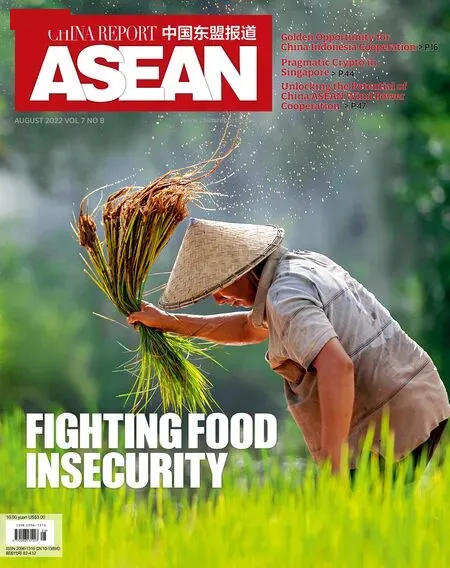FAO Official Urges Countries Not to Impose Food Export Restrictions
By Yuan Yanan
The rise in international food prices is exacerbating global poverty.
According to The State of Food Security and Nutrition in the World 2022 released by the Food and Agriculture Organization (FAO) of the United Nations (UN),the number of people facing hunger continued to grow worldwide and reached 828 million in 2021,representing an increase of 150 million people since 2019,before the COVID-19 pandemic.
On July 18,a UN High-level Special Event entitled “Time to Act Together:Coordinating Policy Responses to the Global Food Security Crisis” was held at UN headquarters in New York City.President of the 76th Session of the UN General Assembly Abdulla Shahid said the World Bank has warned that the conflict in Ukraine will plunge an additional 95 million people into extreme poverty and 50 million into severe hunger this year.
“We face a real risk of multiple famines this year,” said UN Secretary-General Antonio Guterres during the meeting.“And next year could be even worse.”
Food prices in Southeast Asian countries have also been affected by the volatile international market,and governments of Indonesia,the Philippines,Malaysia,and Thailand have been actively responding to the problem.In an interview with China Report ASEAN,Sridhar Dharmapuri,senior food safety and nutrition officer at the FAO Regional Office for the Asia-Pacific in Bangkok,shared his views on the ongoing food security crisis.
China Report ASEAN: The FAO food price index fell 2.3 percent in June compared to a month ago but is still 23.1 percent higher than a year ago.How do you evaluate high international food prices' influence on the Southeast Asian food market? Will it cause more poverty and famine?

Sridhar Dharmapuri
Dharmapuri:Poverty is increasing as a result of the back to back shocks of the pandemic and the food price rise.The current fall in the FAO Food Price Index is a temporary breather.Food prices have been steadily rising for the last two years and the FPI reached its highest level in March this year.High food prices result in households spending a major part of their income on food.In some countries,this figure has crossed 40 percent for poorer households.This leads to lower spending on education and healthcare,which lowers the quality of life and increases poverty especially among the most vulnerable.
China Report ASEAN: What measures can be taken to stop food inflation from affecting the most vulnerable people?
Dharmapuri:Governments should expand social safety nets to protect vulnerable people.This could be through cash or direct benefits transfer or specific measures such as supporting school feeding programmes that enhance access to affordable and nutritious food.Social protection measures were a major success during the COVID-19 pandemic and should be continued.Also,improving food safety and reducing food loss and waste has the potential to increase the food supply and contribute to stabilizing prices.
China Report ASEAN: Some countries have chosen to ban food exports because of inflation.What consequences could this policy bring?
Dharmapuri:Governments are tempted to impose export restrictions with the intent to protect their consumers.But this drives up prices on global markets and worsens the situation for food deficit countries and vulnerable populations.Moreover,when countries restrict exports,their own producers and processors miss out on gaining higher incomes.That in turn negatively affects the country’s foreign exchange earnings.FAO,therefore,strongly urges countries to avoid ad hoc policy reactions and not impose trade restrictions.The gains of imposing such measures are very short lived.
China Report ASEAN: In the context of climate change,Southeast Asia is quite vulnerable.Rising temperatures and extreme weather have already threatened food production in the region.How damaging could it be?
Dharmapuri:Indeed,these are seriously affecting production and productivity.Our flagship report,the State of Food Security and Nutrition 2022,released two weeks ago showed that in SE Asia nearly 43 million people are undernourished.The cost of a healthy diet in SE Asia is more than US$4 per person per day and 53 percent of the population or nearly 350 million people cannot afford it.If the most basic of human needs are not addressed adequately,economic productivity and growth in the medium and long term will be seriously affected.That is why it has become imperative to reshape our food systems as was agreed by the world’s leaders at the UN Food Systems Summit in September 2021.Agrifood systems need to become efficient,inclusive,resilient and sustainable and leave no one behind.

